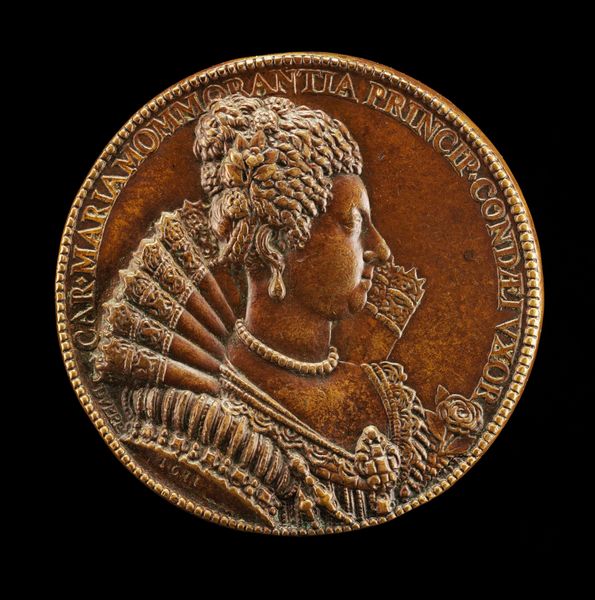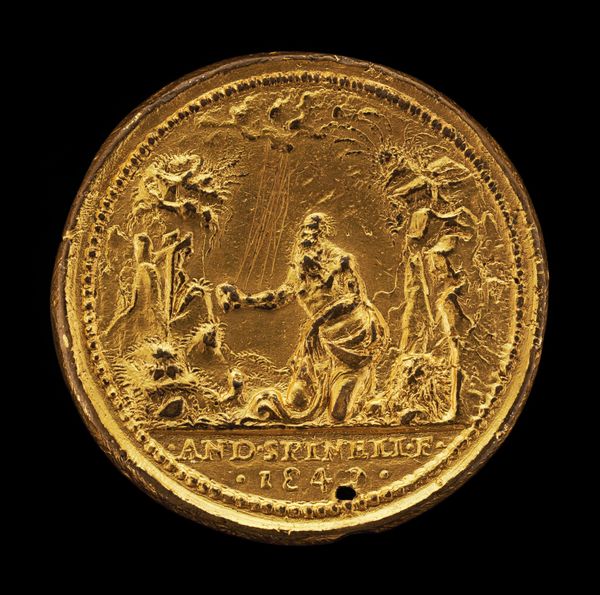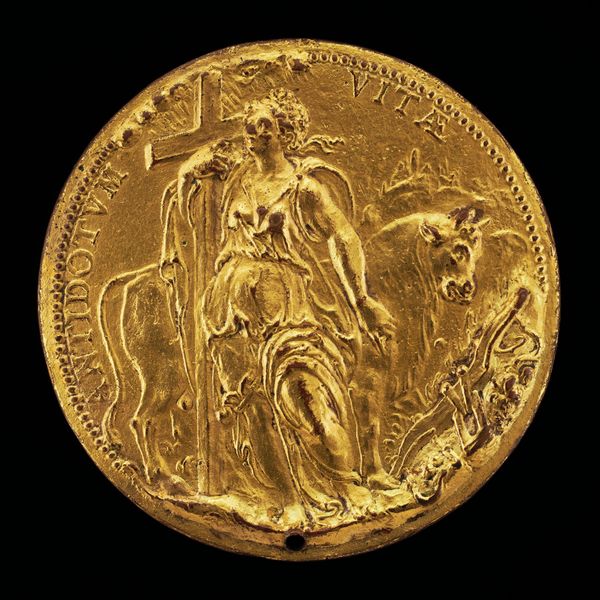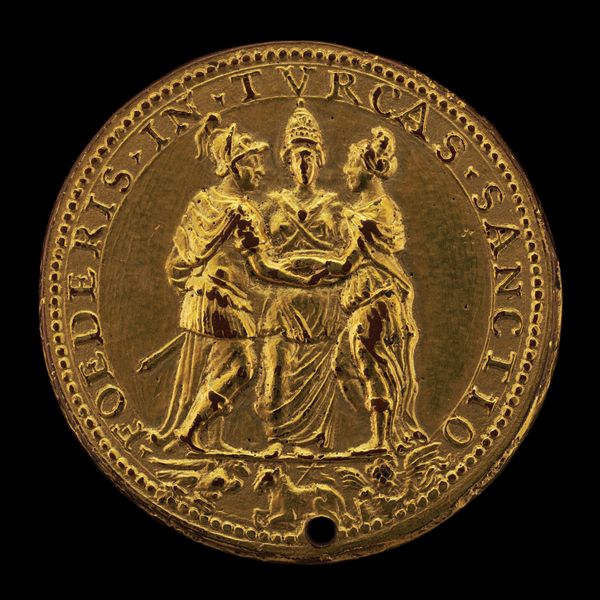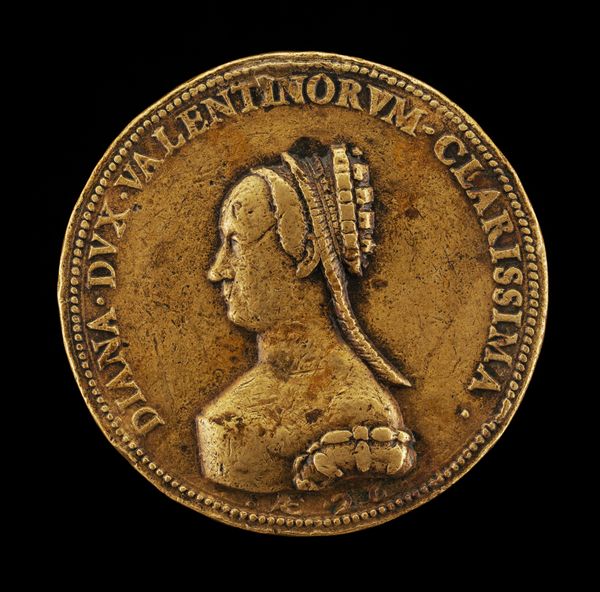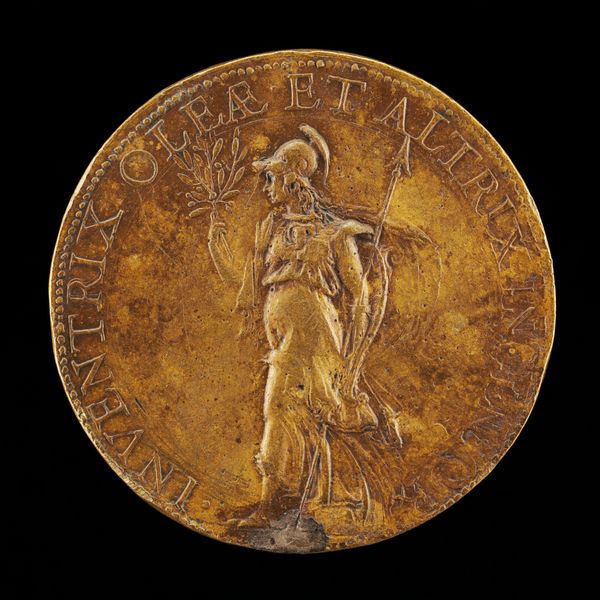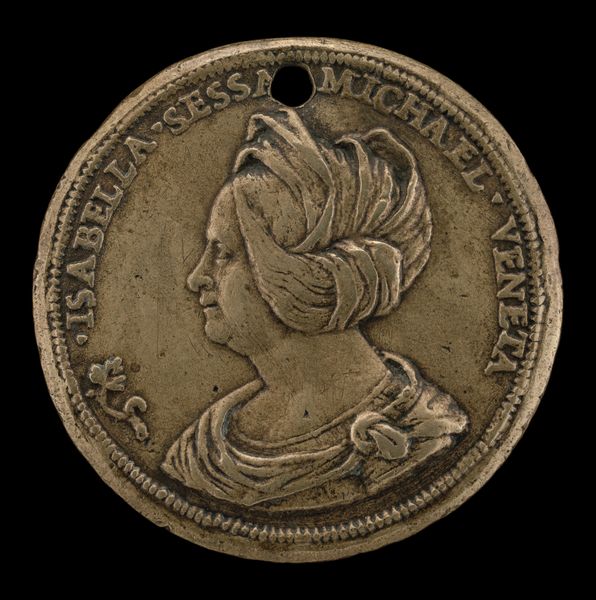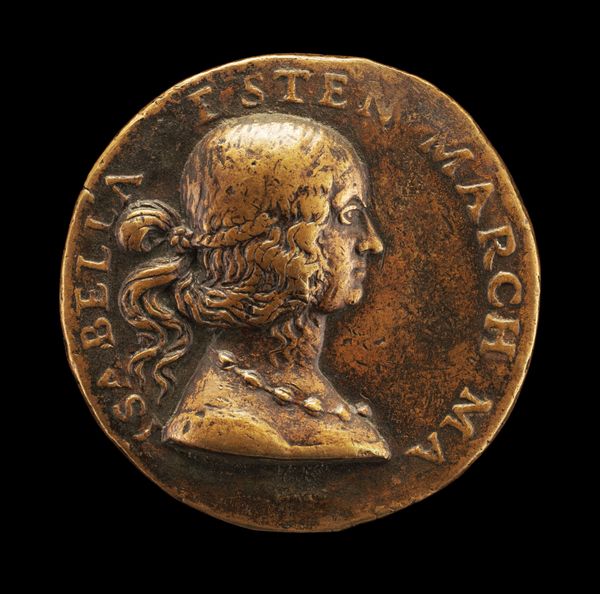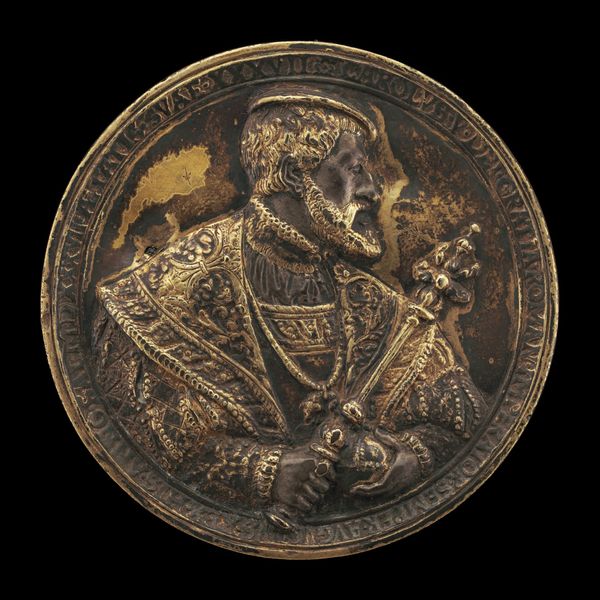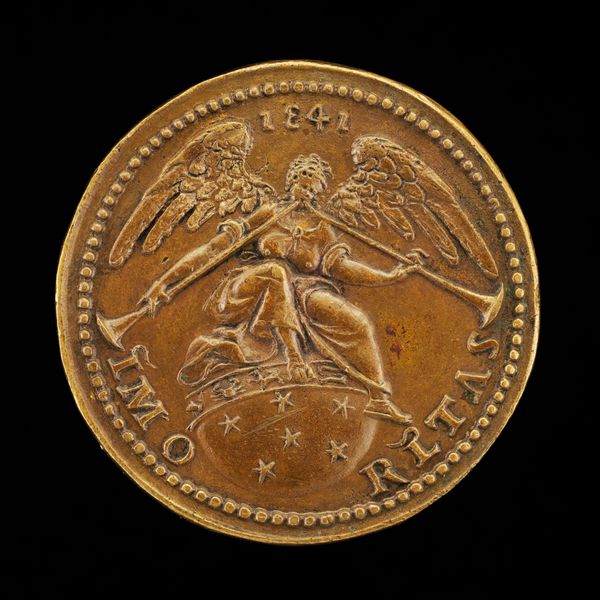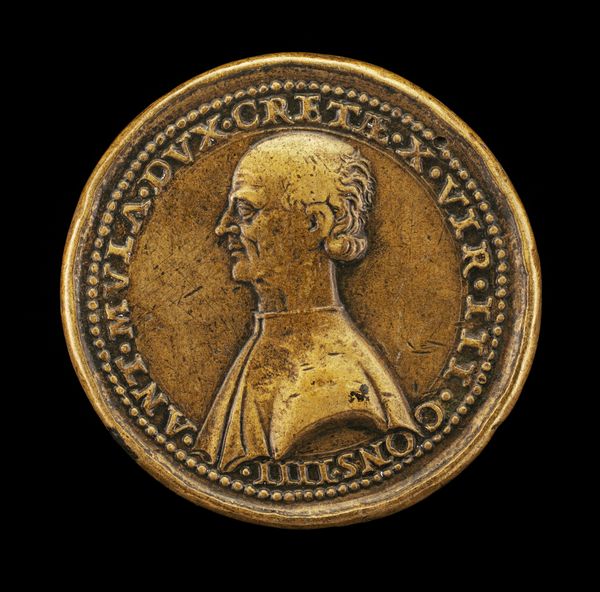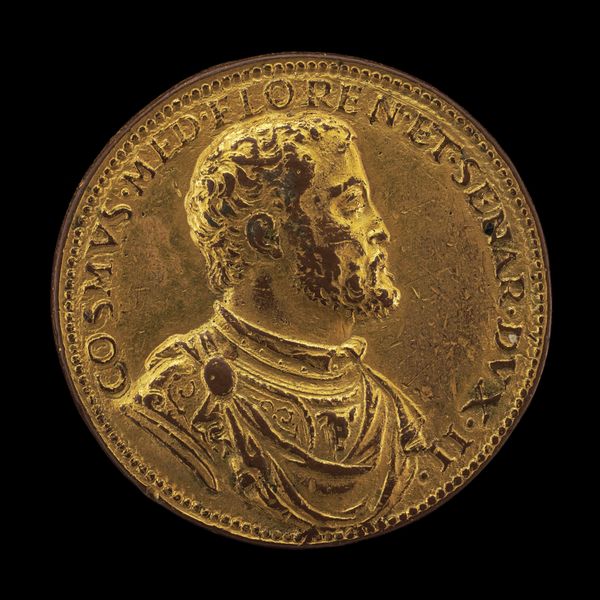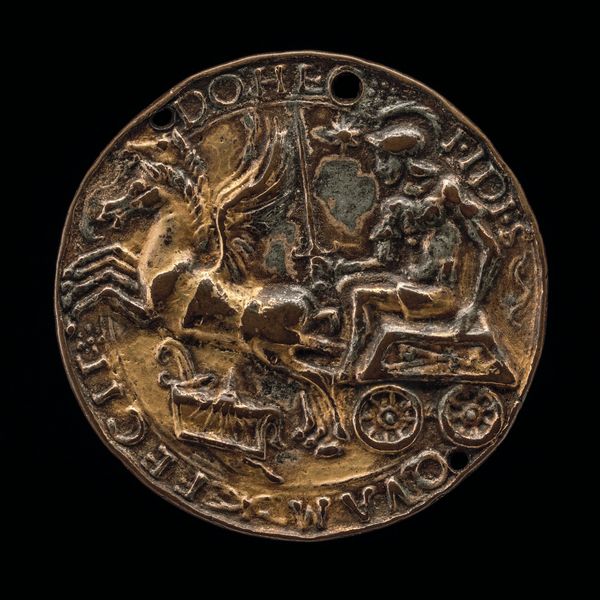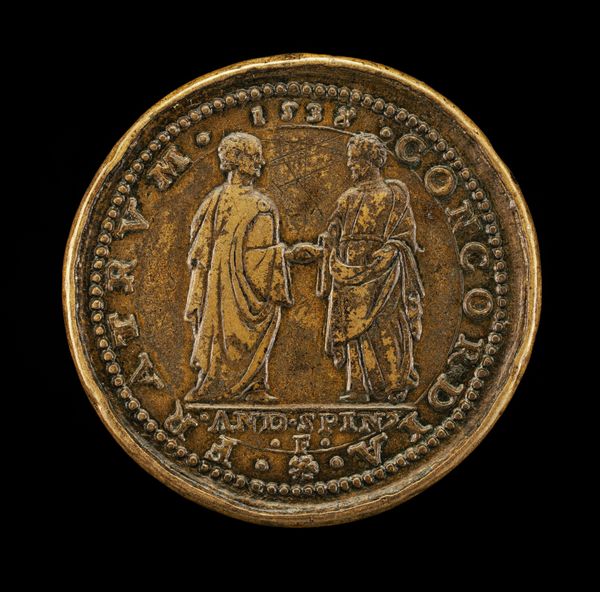![Marie de' Medici, 1573-1642, Queen Regent of France 1610-1617 [obverse] by Guillaume Dupré](/_next/image?url=https%3A%2F%2Fd2w8kbdekdi1gv.cloudfront.net%2FeyJidWNrZXQiOiAiYXJ0ZXJhLWltYWdlcy1idWNrZXQiLCAia2V5IjogImFydHdvcmtzLzNjNGNjODRkLWE3NjAtNDcxNi04MWY0LThjNDUwNmQ0NTU3NC8zYzRjYzg0ZC1hNzYwLTQ3MTYtODFmNC04YzQ1MDZkNDU1NzRfZnVsbC5qcGciLCAiZWRpdHMiOiB7InJlc2l6ZSI6IHsid2lkdGgiOiAxOTIwLCAiaGVpZ2h0IjogMTkyMCwgImZpdCI6ICJpbnNpZGUifX19&w=3840&q=75)
Marie de' Medici, 1573-1642, Queen Regent of France 1610-1617 [obverse] 1615
0:00
0:00
bronze, sculpture
#
portrait
#
baroque
#
bronze
#
sculpture
Dimensions: overall (diameter): 6.2 cm (2 7/16 in.) gross weight: 76.7 gr (0.169 lb.) axis: 12:00
Copyright: National Gallery of Art: CC0 1.0
Curator: What we have here is a bronze medal created around 1615 by Guillaume Dupré. The portrait features Marie de' Medici, Queen Regent of France. Editor: Oh, my! There’s a somber feeling surrounding this. The heavy features of her face, almost weighted down, tell quite a story even before one knows the history. Curator: The portrait captures the Baroque era's love of detail, showcasing the queen's elaborate lace collar and the ornate embroidery of her gown. You can even read some Latin inscribed around the edge. It says "Maria Aug. Galliae Et Navarrae Regina" roughly translated "Maria Augusta, Queen of France and Navarre." Editor: That level of ornamentation really speaks to the power she held, doesn't it? It's a real declaration— almost an armor, protecting her. And look how small and neat they made the lettering. Even her hair looks like a fortress! But knowing what happened historically... it has some dark irony. Curator: Indeed. These medals were often commissioned to project power and prestige, particularly in times of political uncertainty. Marie de' Medici’s regency was a period of considerable intrigue. As a commemorative object, this piece attempts to freeze a moment in time. The Queen's actual reign had lots of challenges, of course. It really serves as a statement, though, regardless of her struggles to remain in control. Editor: I love that you call it "freezing a moment.” Maybe all portraits do this… but there’s something really stiff about this one. You can just tell that holding this stance wasn’t very organic for her. But portraits in general are meant to give you this sense of status that she held. The fact that we're still looking at her now speaks volumes of how the politics changed. Curator: And bronze as a material suggests permanence. Its intention was clearly to solidify Marie's legacy and project an image of unwavering authority. It becomes this tangible symbol that long outlasts the woman, really. Editor: It’s almost a paradox: wanting to last forever but, alas, crumbling into history. Thank you for sharing all that, though. It’s made my time with Marie all the more compelling. Curator: The pleasure was all mine. There is a depth beneath the surface and, for me, this brings out a complex mixture of beauty, craft and underlying narrative.
Comments
No comments
Be the first to comment and join the conversation on the ultimate creative platform.
